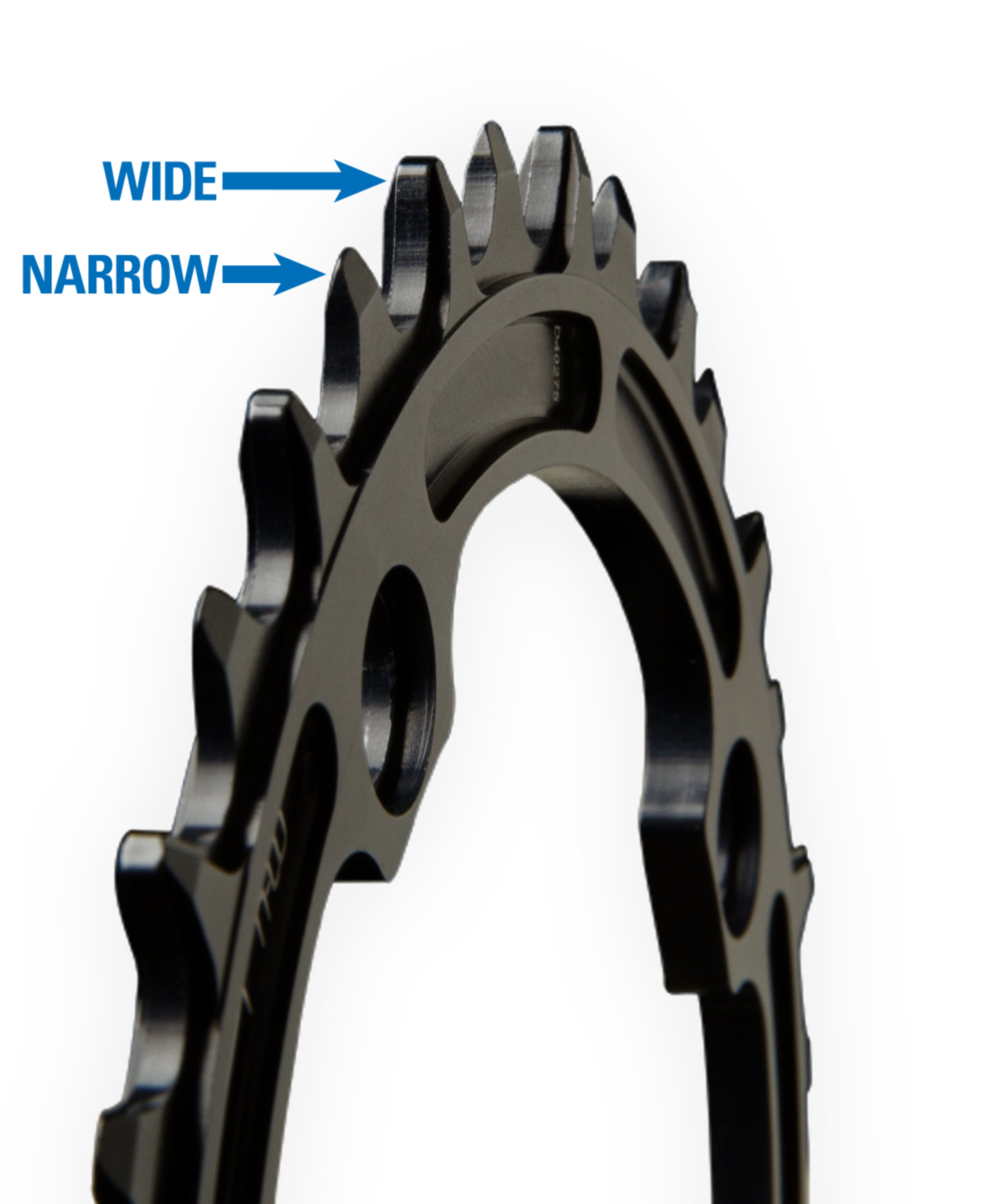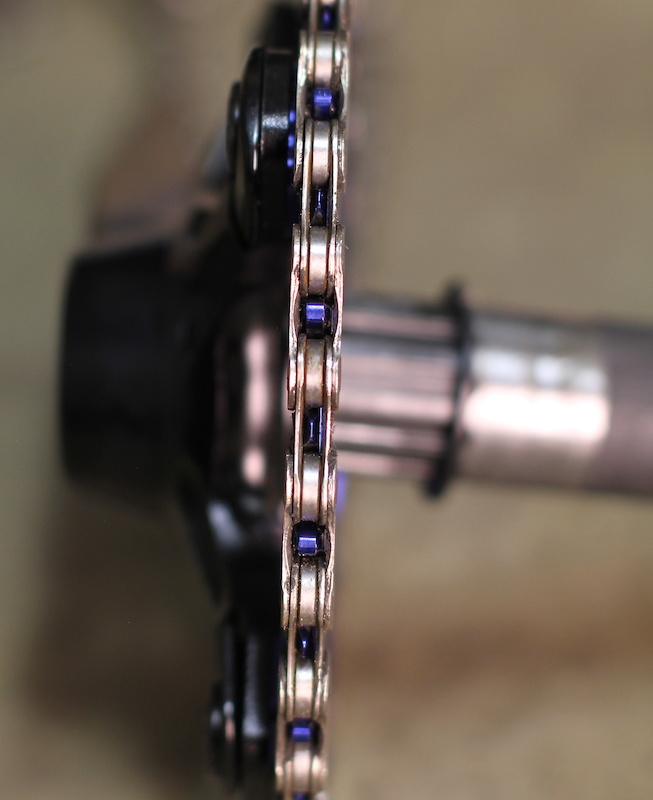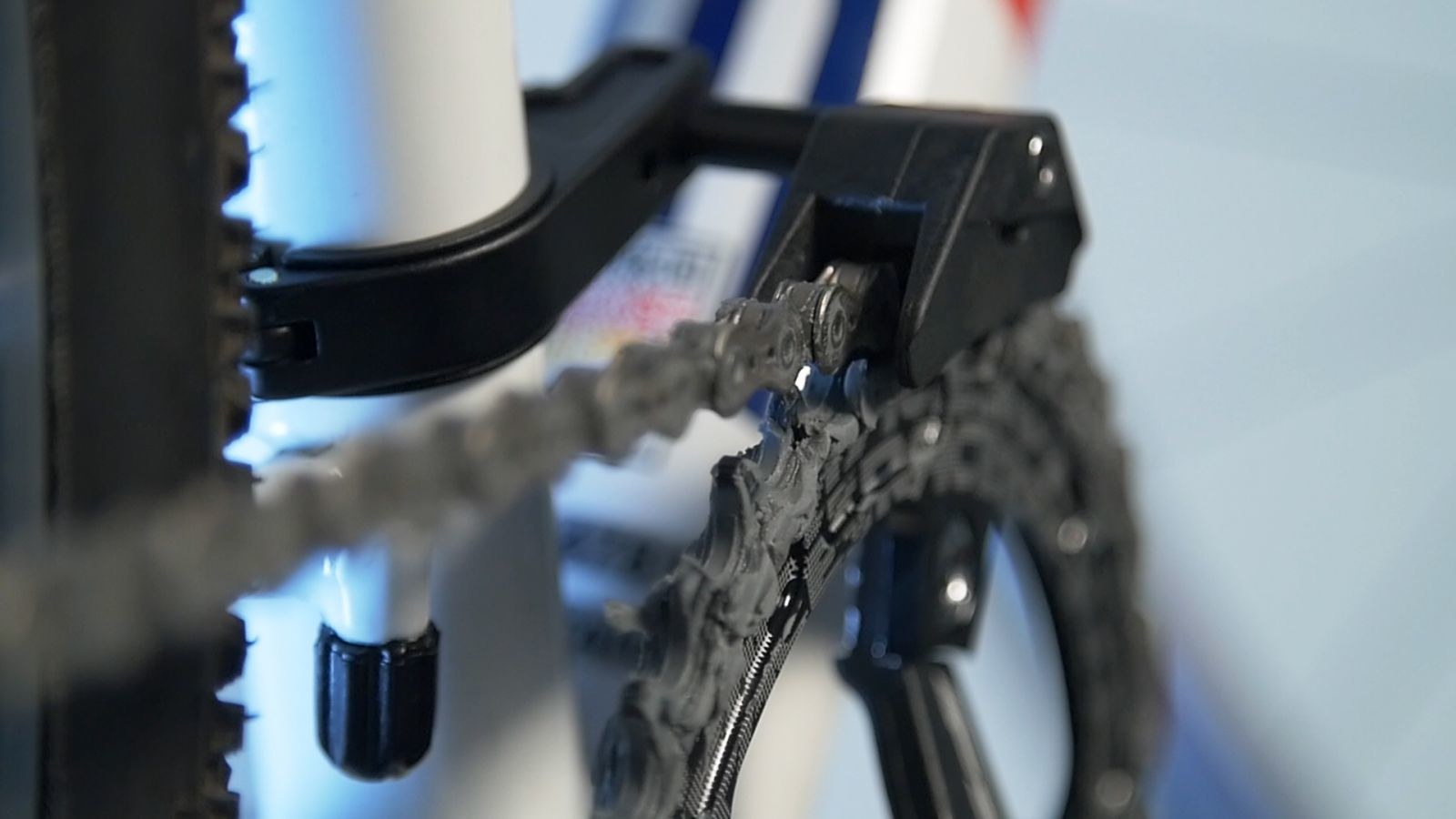Written by Calvin on February 26, 2015/Calvin's Corner
Suspenders and a Belt
The newer style of “Chain Retaining Single Rings” have a clever design specifically for use in drivetrains with only one chainring and a rear derailleur. They use dual-width tooth profiles, alternating between narrow (or “normal,” as if for a double or triple crankset) and wide teeth around the edge of the chainring. The narrow teeth fit between chain links with two inner plates, while the wide teeth fit the chain links with two outer plates.

Image: QBP

Image: mountainbikesdirect.com
Narrow-wide chainrings have become more popular over time, with several companies now producing them. The wide teeth seem to just grab the chain — you can almost hear the chain pop or snap into place as you pedal. In the right conditions, these special rings do appear to work correctly.
Even when conditions are rough and the chain is bouncing up and down and left to right, the narrow-wide chainrings seem to work pretty well. However, when these conditions are combined with mud, the chainrings can fail to hold the chain. This is especially so when mud contains clay, which tends to be very sticky. With clay and mud built up at the chainring, the rollers rise up slightly, and if this occurs just as a bump is hit, the chain can rise up further and then slip off.

Roller rise can be seen here by gap between the chain and top of chainring

Wide-narrow chainring with a guide ensures better chain engagement under all circumstances
For the most secure riding where you want to take no chances, these narrow-wide rings should be used with a chain guide. Running a traditional narrow ring with a guide is not enough. Running the narrow-wide ring alone may not be enough. If you want the best chain-to-chainring engagement at all times, run both — like wearing suspenders and a belt.